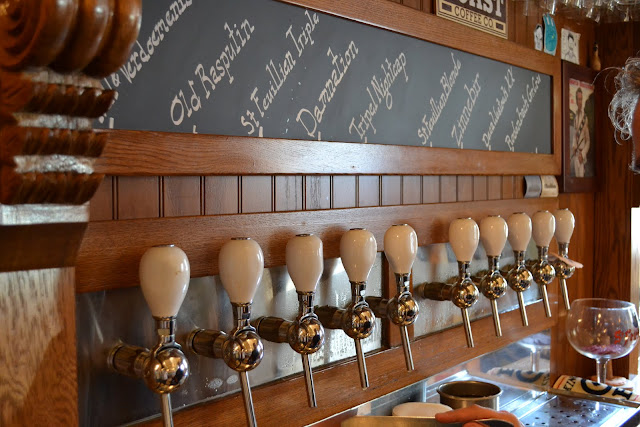"If the ocean was whiskey and I was a duck,
I'd dive to the bottom to get one sweet suck.
But the ocean ain't whiskey and I ain't a duck,
I'll play Jack O' diamonds and trust to my luck.”
I'd dive to the bottom to get one sweet suck.
But the ocean ain't whiskey and I ain't a duck,
I'll play Jack O' diamonds and trust to my luck.”
- Tex Ritter in Rye Whiskey
Founded in 1897 and released in 1999, Bulleit Bourbon (I reviewed that here) has been climbing the ranks ever since. As my go-to bourbon, its high rye mash bill gives it a unique palette to remember. I've been a fan of Bulleit since the first time I tried it and when I heard about a rye version the Bulleit Distilling Co. was working on I was pretty excited. I Definitely had some high hopes. In development since 2004, Tom Bulleit’s Rye was due to come out being that rye is today's current trend whiskey. Yet for the very reason of rye's popularity, this release would need to rise one above the rest, holding its own as a reasonably priced rye.
Released nationally just this May, and the second spirit to be released by Bulleit thus far, Bulleit “95” Rye has a mash bill of 95% rye and 5% malted barley, making it again unusual for its own class which legally only requires 51% rye in the mash bill. Aged a minimum of four years and as long as 7 in new white oak barrels, charred at a level 4 (the highest level char), and sourced from German, Swedish, and Canadian grains, Bulleit Rye is produced by the “infamous” and “illusive”(..?) company, LDI – the same producer of Redemption and Templeton Rye.
Released nationally just this May, and the second spirit to be released by Bulleit thus far, Bulleit “95” Rye has a mash bill of 95% rye and 5% malted barley, making it again unusual for its own class which legally only requires 51% rye in the mash bill. Aged a minimum of four years and as long as 7 in new white oak barrels, charred at a level 4 (the highest level char), and sourced from German, Swedish, and Canadian grains, Bulleit Rye is produced by the “infamous” and “illusive”(..?) company, LDI – the same producer of Redemption and Templeton Rye.
The label does say this whiskey is "small batch" but how "small" that is, coming from LDI, I don't really know. It is really a catchphrase today which means nothing, unless the producer is completely transparent. LDI, nor Bulleit, are companies that are very transparent so I would simply disregard the claim, true or not. Unless some of you know the answer?
Bulleit "95" Rye Whiskey Review:
Price: Around $28 for a 750ml bottle.
Price: Around $28 for a 750ml bottle.
Packaging/Labeling: Brilliant as Bulleit always is. I think it was the right choice to stick with the “classic” bottle while simply changing the color of the label. No complaints. I just hope they don’t change it like so many other producers are doing right.
Alcohol Content: 90 Proof, 45% ABV.
Color: Golden Straw.
Nose: Dark cherry, aromatic tobacco, with mint and spice. Honey, leather, milk chocolate (no bitter dark cocoa) and caramel in the background.
Tasting: Enters softly, almost flat. Progresses into a spiced cherry and apricot. There is a minty and creamy airiness which rounds off with maple syrup, Red Hots and a very dry oak.
Conclusion: Whether I am having an off day or not, the front is not very impressive. At least it isn't as strongly built as I think it should be. I will keep trying this for an update later - I really want to like the whole thing. You do get the spiciness from the rye but not nearly what I would expect from such a high rye mash bill. Being that it contains whiskeys between 4 and 7 years, I would guess there is more 4 year old whiskeys than 7. I suggest some higher aging to possibly round out the front, though it is what it is. I will also update this on how it works in a cocktail. Either way, despite the arrival I could still sip this neat (with a little water).

































































